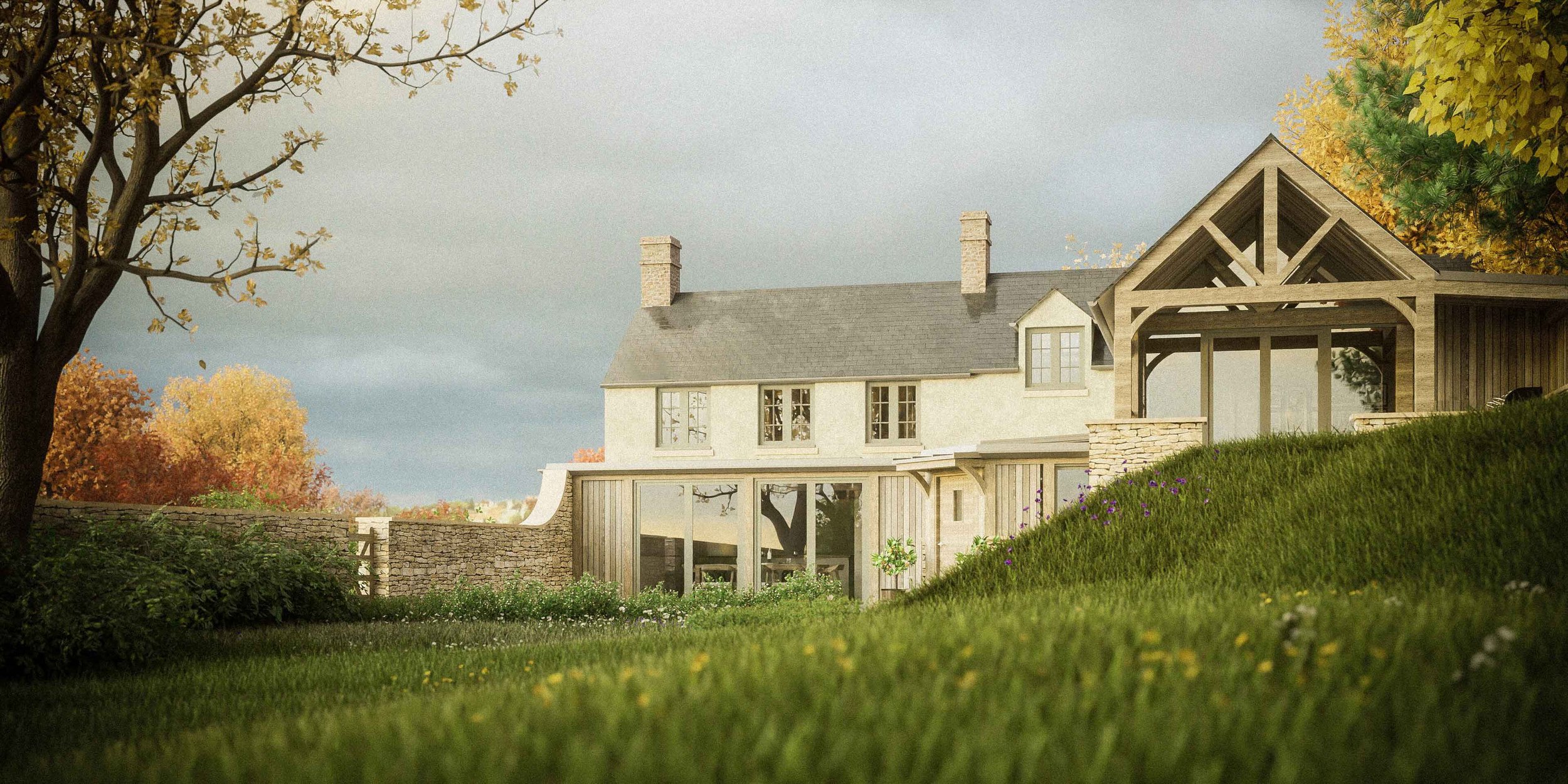
Creative & Sustainable Design for Residential Projects
Joshua Hovey is a RIBA Chartered Architect & Certified Passivhaus Designer, Serving Gloucestershire, Wiltshire and Surrounding Areas.
Sustainable & Innovative
New-Build
We help self-builders looking to design their dream eco-home, and land owners looking to maximise the potential of their plot. We have a proven track record of securing planning permission within challenging design constraints such as conservation areas, national parks, AONBs and near listed buildings.
Contemporary Extensions
We design beautiful contemporary extensions. Transform your living space by adding natural light, improving the connection with the outdoors and creating harmony between spaces.
Listed and Heritage Property Alterations
Do you have a listed building or period property which lacks natural light, feels disconnected from the outside and has poor flow between living spaces? We are experts at turning period properties into functional homes, customised for modern living.
Sensitively Designed Barn Conversions
We are architects skilled at working with listed buildings such as barn conversions, in conservation areas and AONBs and with complex design constraints. Let us help you to make the best use of your existing building.
Passivhaus Architects | Joshua Hovey Architects
Key Considerations When Planning a Passivhaus Design Project
Understanding the Passivhaus Standard
When planning your Passivhaus design project, it's essential to understand the Passivhaus standard. This energy efficiency standard aims to drastically reduce your home's energy consumption, ensuring a comfortable and sustainable living environment. By focusing on high levels of insulation, airtightness, and efficient ventilation systems, Passivhaus design principles create homes that maintain a consistent indoor climate with minimal energy use. Familiarising yourself with these principles is the first step towards achieving your energy-efficient dream home.
Prioritising Site and Climate Considerations
Your home's site and local climate play a significant role in Passivhaus design. The orientation of your home, the amount of natural light it receives, and the prevailing winds are all factors that influence energy efficiency. By working with Passivhaus architects, you can optimise your home's design to take full advantage of its surroundings. This includes positioning windows to maximise natural light and using landscaping to provide natural shading and wind protection, ensuring your home stays comfortable year-round.
Choosing High-Performance Building Components
Selecting high-performance building components is crucial for meeting Passivhaus standards. This involves using superior insulation materials, high-quality windows and doors, and advanced ventilation systems with heat recovery. These components work together to create an airtight building envelope, reducing heat loss and maintaining a stable indoor temperature. By investing in these high-performance elements, you can significantly lower your home's energy consumption and enhance overall comfort.
Emphasising Sustainable and Innovative Design
Passivhaus design principles emphasise sustainability and innovation. Incorporating renewable energy sources, such as solar panels, and using eco-friendly building materials can further enhance your home's energy efficiency. Additionally, integrating smart home technologies can help you monitor and manage your energy use effectively. These sustainable and innovative design solutions not only reduce your environmental footprint but also provide long-term cost savings.
Balancing Aesthetics and Functionality
Creating a Passivhaus doesn't mean compromising on style. It's about balancing aesthetics and functionality to create a home that's both beautiful and efficient. Work with your architect to ensure the design reflects your personal taste while meeting Passivhaus standards. From the layout and interior design to the choice of finishes and materials, every aspect of your home can be tailored to suit your preferences. The result is a stylish, comfortable, and sustainable home that you can be proud of.
By focusing on these key design principles, you can successfully plan and execute your Passivhaus project. Understanding the Passivhaus standard, prioritising site and climate considerations, choosing high-performance building components, emphasising sustainable and innovative design, and balancing aesthetics and functionality will guide you in creating an energy-efficient and comfortable home that meets the highest standards of sustainability.









